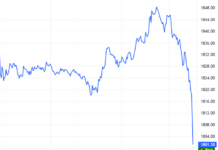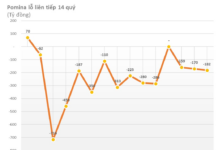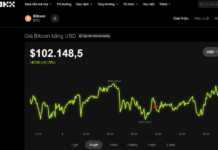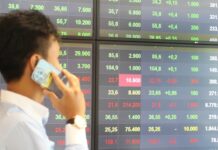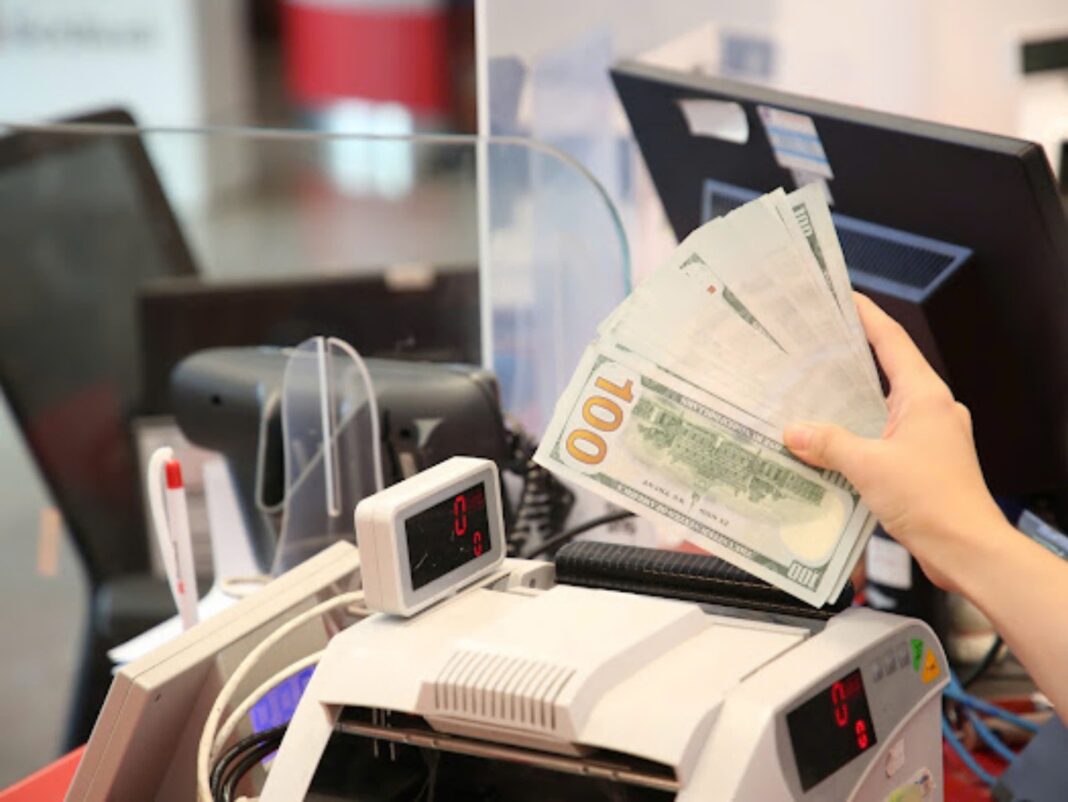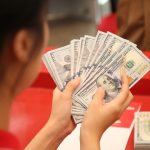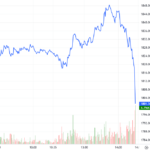Towards the end of August 28, the USD exchange rate at many commercial banks closed at 24,680 VND/USD buying rate and 25,020 VND/USD selling rate. During the day, there was a time when the USD rate dropped below the 25,000 VND mark, falling to 24,990 VND/USD. If calculated from the beginning of August up to now, the USD rate in banks has decreased by about 400 VND (1.6%).
Ms. Nguyen Thi Thao Nhu, Senior Director of Individual Customers, Dragon Vietnam Securities Company (VDSC), analyzed that the main reason for the weakness of the USD in the global currency market is expected that the Federal Reserve (Fed) will cut interest rates in September. Low interest rates reduce the attractiveness of USD to investors, causing this currency to depreciate against other currencies.
In the domestic market, the State Bank of Vietnam (SBV) has applied many measures to stabilize the exchange rate, including increasing VND liquidity through regulating the interbank market and selling USD into the market. The injection of money through the open market operation (OMO) with interest rates gradually decreasing from 4.5% to 4.25% has helped to cool down the USD/VND exchange rate significantly.

The cooling of the exchange rate has brought about many positive impacts on the economy. Photo: LAM GIANG
Mr. Nguyen Thanh Lam, Director of Analysis of Individual Customers Division, Maybank Securities Company, also believed that the Fed is almost certain to cut interest rates in September, helping to reduce the interest rate gap between USD and VND – one of the main reasons why VND has depreciated against the USD. “When the root cause mentioned above is resolved, the VND will also appreciate against the USD. For the economy in general, the prices of imported goods will cool down, reducing inflationary pressure. The reduction in exchange rate pressure also gives the SBV more room to operate monetary policy,” said Mr. Lam.
Regarding the related sectors when the exchange rate cools down, according to Maybank’s expert, the groups that import a large amount of raw materials such as steel, gasoline, beverages, or groups with high foreign currency debt such as aviation, electricity, steel, automobiles, etc., will also benefit directly.
Dragon Vietnam Securities’ expert opined that the cooling of the exchange rate has brought about many positive impacts on the economy, especially reducing inflationary pressure, increasing domestic purchasing power, and strengthening consumer confidence, thereby contributing to economic growth.
According to Ms. Nguyen Thi Thao Nhu, when the USD decreases, industries that depend heavily on imported raw materials, machinery, and goods such as processing industry, technology production, and consumer goods will directly benefit from reduced import costs. The retail industry also benefits from reduced import costs for imported goods, creating conditions to increase competitiveness and improve profit margins, especially for technology products, electronics, and high-end consumer goods. “Enterprises in the construction and real estate industries benefit indirectly from reduced import costs for construction materials, helping to implement projects at lower costs. However, the decrease in the exchange rate poses challenges for exporting enterprises such as textiles, seafood, and transportation… affecting their competitiveness in the international market,” analyzed Ms. Thao Nhu.
Positive Impacts
Mr. Tran Vu Khanh, Director of Hiep Quang Agro Company, which specializes in importing agricultural products such as corn, soybeans, and wheat, said that a sharp decrease in the exchange rate would positively support the prices of many products using imported raw materials. Mr. Khanh also appreciated the SBV’s management of the USD/VND exchange rate, with a small fluctuation margin, helping enterprises to easily plan their business. “In many countries, the depreciation of the local currency against the USD reaches double digits, making it difficult to consume imported goods,” said Mr. Khanh.
Previously, some airlines said that one of the difficulties in their business operations was the increase in input costs due to exchange rate fluctuations. Therefore, a deep decrease in the exchange rate will have a very positive impact on their activities.
Which bank offers the highest interest rate for online savings in early February 2024?
Beginning February 1st, 2024, several banks have been adjusting their interest rates downwards for savings accounts ranging from 1 to 24 months. Based on a survey conducted across 16 banks, the highest annual interest rate for online savings deposits at a 6-month term is 5%, while for a 12-month term, it is 5.35%.
New currency exchange service: Rare small denominations
The demand for exchanging small denominations of money increases during the Lunar New Year, but the availability of small bills is limited. The familiar “money exchange kiosks” are also gradually disappearing from this service.

